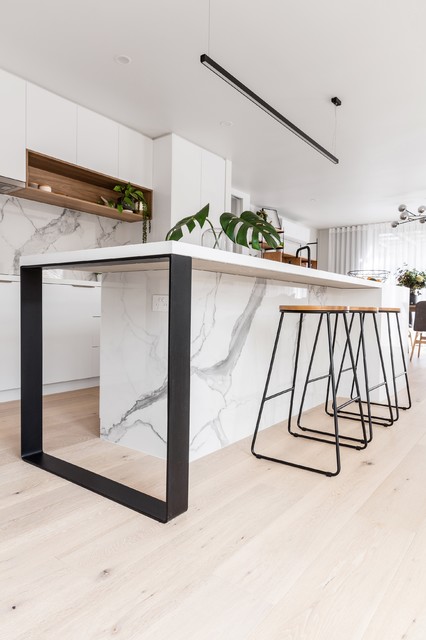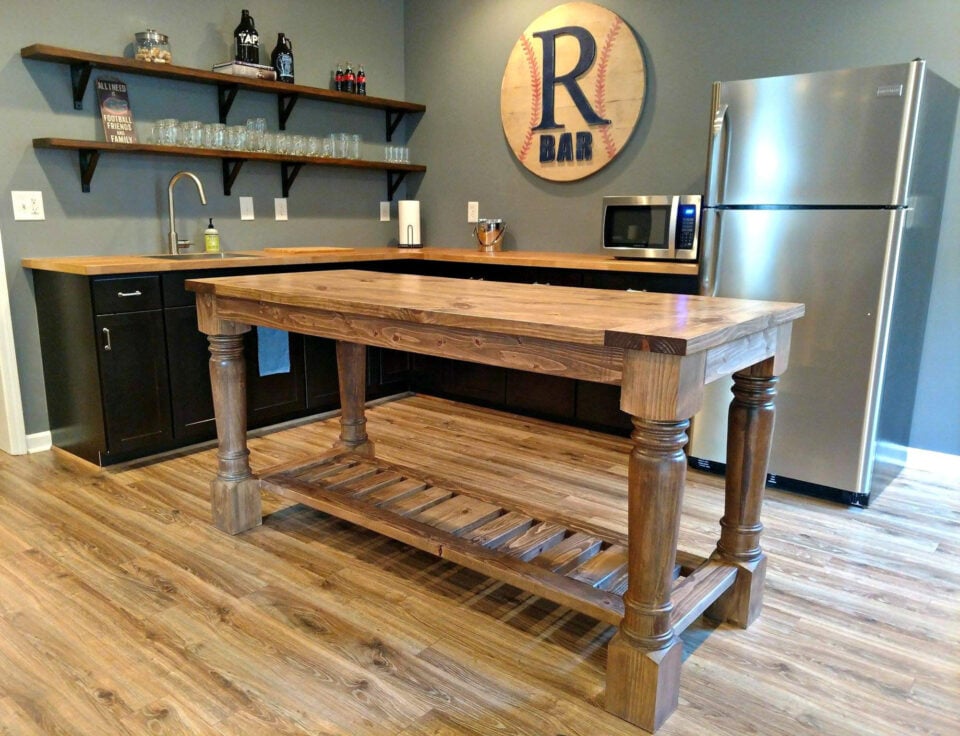The Leading Kitchen Island Leg Styles to Complement Any Kind Of Design Aesthetic
The Leading Kitchen Island Leg Styles to Complement Any Kind Of Design Aesthetic
Blog Article
The Value of a Sturdy Cooking Area Island Leg in Developing a Practical Cooking Area
A strong kitchen island leg serves as a basic component in establishing a useful food preparation setting, offering needed support for both the countertop and various kitchen area tasks. As kitchens develop right into multifunctional locations for food preparation, dining, and interacting socially, the option of products and design considerations for island legs comes to be significantly essential.
Advantages of Sturdy Island Legs
Supplying crucial assistance, sturdy kitchen area island legs play a crucial duty in enhancing the capability and durability of kitchen area islands - kitchen island leg. These legs not only birth the weight of the counter top and any extra products positioned on the island, however additionally add to the total stability of the framework. A well-supported kitchen island ensures that it remains upright and functional, also under hefty usage, which is specifically vital in hectic kitchen area environments
Additionally, sturdy island legs can boost the aesthetic charm of the kitchen. They provide a solid framework that can match various style styles, from modern to typical. This convenience allows home owners to tailor their kitchen area islands according to individual preference while guaranteeing that the structural honesty remains uncompromised.
Along with their helpful role, robust cooking area island legs can likewise improve safety. A steady island lowers the danger of mishaps triggered by tipping or tottering, which is especially important in homes with kids or senior individuals. In addition, strong legs can assist in a seamless flow of tasks, enabling effective meal preparation and social communications within the kitchen area room. Eventually, buying tough kitchen island legs is important for a practical and visually pleasing cooking location.
Materials for Kitchen Area Island Legs
When choosing products for cooking area island legs, sturdiness and visual charm are important variables to think about. The most common materials include wood, metal, and engineered wood, each offering one-of-a-kind advantages.
Hardwood, such as oak, cherry, or maple, is a traditional choice as a result of its stamina and ageless charm (kitchen island leg). It can endure considerable weight and is immune to wear, making it ideal for high-use cooking area settings. Additionally, wood can be tarnished or painted to complement numerous cooking area designs
Steel legs, typically crafted from stainless-steel or functioned iron, provide a industrial and modern look. They are extremely solid and can sustain substantial loads while being immune to dampness and warmth, which is beneficial in a cooking location. Metal legs can likewise be quickly cleaned up, improving their practicality.

Style Considerations for Security
The choice of materials for kitchen area island legs directly affects the layout factors to consider for security. When making a kitchen island, it is critical to review the weight-bearing capacity of the selected products. Much heavier products, such as solid wood or metal, normally supply greater security, particularly under the anxiety of day-to-day use.
Furthermore, the leg design need to integrate appropriate geometry to boost stability. A wider base enhances the assistance area, decreasing the threat of tipping or wobbling. Consideration needs to likewise be offered to the elevation of the legs; out of proportion leg sizes can result in imbalance, jeopardizing the total security of the island.
Moreover, the distribution of weight throughout the island is crucial. Guaranteeing that the leg placement lines up with the heaviest parts, such as devices and kitchen counters, will additionally boost stability.
Upkeep Tips for Longevity

Cleansing is one more vital facet of maintenance. Depending on the product of the legs-- whether timber, steel, or composite-- proper cleaning techniques need to be employed. For wooden legs, a gentle clean with an ideal timber and a wet fabric cleaner will help protect their surface. Metal legs might need a light polish to avoid corrosion and maintain their luster.
If the kitchen island experiences hefty usage, consider enhancing the legs with extra braces or supports to boost toughness. By following these upkeep pointers, home owners can ensure their cooking area island legs remain durable and learn the facts here now useful for years to come.
Selecting the Right Leg Style
Normal maintenance guarantees that kitchen island legs stay practical and strong, yet selecting the ideal leg design is equally important for both aesthetic appeals and support. The choice of leg design can significantly affect the overall style and consistency of your cooking area.

Functionality is an additional vital aspect. For circumstances, thicker legs or those with a durable base can support heavier kitchen counters and tools, improving the island's utility. On the other hand, slim legs may develop a ventilated appearance, appropriate for lighter layouts yet possibly much less helpful.
Conclusion
In recap, the relevance of durable cooking area island legs can not be overemphasized in the production of a useful cooking location. These legs supply essential assistance, improve security, and add to the general aesthetic of the kitchen area. By very carefully picking proper materials and styles, along with implementing proper maintenance techniques, the long life and performance of cooking area islands can be guaranteed. Eventually, spending in durable island legs is essential to accomplishing a safe Home Page and efficient cooking environment.
A tough cooking area island leg offers as an essential component in developing a useful cooking setting, supplying necessary support for both the countertop and numerous cooking area tasks.Offering crucial assistance, sturdy kitchen island legs play an essential function in enhancing the performance and durability of kitchen area islands. Ultimately, spending in strong kitchen island legs is important for a functional and aesthetically pleasing cooking location.
Consideration ought to also be given to the height of the legs; disproportionate leg lengths can lead to inequality, jeopardizing the total security of the island.
Wood legs offer heat and a traditional appearance, while steel legs offer a modern and commercial feel.
Report this page